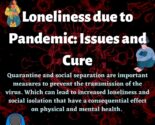
The Relationship Between Bullying and Development
School bullying affects the victims, bullies and bystanders negatively. It affects their academic, social, emotional, mental, and psychological functioning as well as physical health. Psychological as well as physical problems arising from bullying may extend well into adulthood.
Author: Lavanya Murali
Many students across the world face bullying and violence and it is an important problem that must be addressed. According to Owens, bullying is intentional oppressive behaviour against another person that causes physical and/or psychological harm. This behaviour is repeated over time and the victim is often the same person or people.
Categories
Bullying behaviors are usually classified into one of four categories:
- Physical: overt physical aggression, for example, pushing, hitting, kicking, spitting.
- Verbal: refers to verbal aggression, for example, name-calling, teasing, insulting, threatening speech, etc.
- Social exclusion: Damaging the peer relations of the victim.
- Extortion: includes asking for money or others’ property.
School Bullying
School bullying affects the victims, bullies and bystanders negatively. It affects their academic, social, emotional, mental, and psychological functioning as well as physical health. Psychological as well as physical problems arising from bullying may extend well into adulthood. Many studies have found correlations between bullying and the environment of the child. The child’s accessibility to violent examples, relationship with peers – parents, school performance and instability of emotions are related to bullying.
School climate is also an important factor involved in bullying. Research has found that a harmonious school environment is effective in reducing bullying. Students are at a greater risk of engaging in such acts if there is tension and conflict in the school environment; with low morale among teachers as well as students. Victims may not understand how to deal with this situation and could develop anxiety, depression and other mental illnesses. They could avoid social contact and close themselves off from the world. In other cases, they may displace their anger by bullying someone else, leading to a vicious cycle of persecution. Adults must educate the children with effective strategies to cope with situations at home or situations with bullying to break the cycle of hate. The school plays an important role in this aspect.
Steps taken by Schools
There are currently three key approaches taken by schools to curb the incidence of bullying. These are remedial, preventative and developmental.
Remedial guidance is intervention-focused. It offers programs and therapies to students who are experiencing emotional, psychological or behavioural struggles. When dealing with cases of bullying, the remedial approach caters to the victims as well as the perpetrators; curating programs and interventions for each individual, as a response to bullying. This approach is more responsive than precautionary.
Another approach is the preventative approach, and in contrast to the remedial approach, this is more a deterrent of the act or incidence of bullying itself. This approach is highly proactive and is focused on the anticipation of problems like bullying. It also enhances the student’s awareness of bullying and provides them with strategies to handle such problems in case they ever encounter such a situation.
The development approach takes it one step further. It is not problem-driven. Rather, the idea behind this approach is to guide the students’ development as people of the society; including their moral, social and moral selves. This approach is more holistic and positive. Addressing issues such as self-knowledge, self-responsibility, interpersonal relationships, and bonding is characteristic of this approach. This education is delivered using a guidance curriculum at the classroom level in schools. By providing education about the need to respect oneself and others, the understanding of differences, self-determination and decision making responsibly. The students will be able to develop themselves positively, and this will also have a positive impact on their interpersonal relationships. This has proved to be the most effective method in reducing juvenile delinquency.
Strength and Capacity of the Students
The strategy of using positive development of the youth to tackle bullying targets the strengths and capacities of the students. Their character, their interpersonal relationships and their interest and ability to contribute to society. This is done using carefully curated academic programs and curriculums. Such programs are targeted at increasing the psychosocial and societal well-being of adolescents by strengthening their assets and capacities. In a study done by Catalano et al, fifteen psychological constructs and capacities were identified as crucial for the successful development of children. These include constructs such as bonding, recognizing positive behavior, fostering prosocial involvement and prosocial norms. And those which promote emotional, moral, social, and behavioral competence, all of which promote healthy interpersonal relationships contribute to building resilience and strength in adolescents. This will serve to counteract bullying as well as other forms of school violence.
Tackling Bullying
Adopting this method to tackle bullying has proven to have several advantages. First and foremost, it addresses bullying from a positive developmental archetype and stresses the importance of skill and competence construction. Bullying and the associated problems are used as the lens or contexts through which students view, learn and understand appropriate social behaviour, management of emotions, empathy and understanding others’ emotions, appreciating others and forgiveness. The focus is on helping students. Explore the appropriate values and attitudes while being exposed to unjust and even violent situations and environments. To help the kids move from an egocentric perspective and understand the emotions and the viewpoint of other people and evaluate the best responses to events or stimuli. The approach towards reducing bullying is hence through enhancing students’ moral, social, and behavioral competence.
Second, this is a conscious decision to incorporate anti-bullying elements into the classroom curriculum and the school’s regular syllabus. As an intervention strategy, enhancing the knowledge of students about bullying and effective ways of handling it using classroom activities and discussions is highly efficacious. Students can be equipped with the knowledge and skills to foster a positive and culturally appropriate learning environment. Group activities involving cooperation also serve to magnify the interpersonal and intrapersonal skills of students and reduce the extent of victimisation of students. This will be effective in promoting a respectful, peaceful and loving classroom and school environment. Which highlights the third advantage – promoting a harmonious school environment. Building the assets and strengths of the students in interpersonal relationships, bonding and competence will aid in creating a caring school culture.
Conclusion
The development approach to tackling bullying, hence, is the most effective strategy, since it addresses the problem as a whole, is preventative as well as remedial and also encompasses all the problems and causes related to bullying. It also helps in the creation of competent, socially proficient and empathetic individuals through education in the classroom.
Mail us at edumoundofficial@gmail.com






